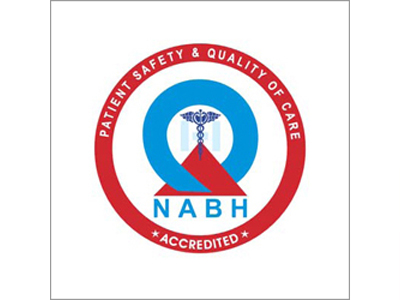- Dry eye disease not only affects the patient’s vision but also hampers their quality of life and work productivity
- Dry eyes in winter are not uncommon
- Prolonged use of mobile or computer screens, intense near-work activities, medication for certain diseases and some critical health conditions including arthritis can lead to dry eyes
- Causes dryness, burning sensation, redness, excessive discharge, sensitivity to light, tearing or blurring of vision
- In a study done by researchers at LVPEI, it is estimated that 45% or nearly half of India’s urban population is likely to be affected by this condition by the year 2030
'Dry eye disease not only affects the patient’s vision but also hampers their quality of life and work productivity leading to anxiety or depression. If it is picked up early and treated appropriately, patients with dry eyes can lead a normal and symptom-free life,' says Dr Shilpa Tarini, Consultant Ophthalmologist, Shantilal Shanghvi Cornea institute, GMR Varalakshmi Campus, L V Prasad Eye Institute. LVPEI’s GMR Varalakshmi campus in Visakhapatnam offers a wide range of advanced diagnostics, and clinical and surgical treatment options to treat dry eyes in patients.
'Using humidifiers in winter, wearing protective eyewear while driving, taking frequent breaks while using a computer or mobile - commonly termed as 20-20-20 rule, warm compresses followed by lid massage in cases of inflammation of glands in lids, and using lubricants can help prevent the occurrence of dry eyes. But there will be conditions that are pathological and can affect the quality of a person’s life significantly. Identifying these conditions and treating them early can prevent irreversible vision loss. Therefore, it is critical that the people-at-risk particularly the urban corporate workforce gets screened for this condition and seeks timely relief,' adds Dr Tarini.
What are dry eyes: When we blink, a film of tears spreads over the eye that keeps the eye surface smooth and clear. This is important for us to enjoy good vision. When our eyes are unable to produce sufficient tears to keep the surface moist, or when there is excessive evaporation, it leads to a condition called Dry Eyes.
Symptoms: When someone has dry eyes, they experience a constant sense of discomfort with symptoms such as a burning sensation or stinging in the eye, redness, excessive mucus discharge, sensitivity to light, excess tearing, or blurring of vision.
Prevalence: In a study done by researchers at L V Prasad eye institute, it is estimated that based on current incidence rates, 45% or nearly half of India’s urban population is likely to be affected by this condition by the year 2030, roughly translating to a staggering 275 million people.
Causes: Because of the dry winter weather, Dry Eyes in this season are not uncommon. Looking at computer or mobile screens for long durations, reading and intense near-work activities that reduce blinking, constantly sitting in air-conditioned rooms, and riding bikes are also some of the activities that can lead to dry eyes. Certain diseases such as rheumatoid arthritis, Sjögren’s syndrome, thyroid disease, and lupus and medications used for schizophrenia and Parkinson’s disease, depression and hypertension, oral retinoids commonly used for acne and antihistaminics commonly used to treat allergies, hormone replacement therapy and birth control pills can also cause dry eyes. Reduced corneal sensitivity which may be seen after viral infections of the eye, laser surgery, contact lens and brain surgeries, can also lead to dry eyes.
Diagnosis: The ophthalmologist will perform a detailed eye examination where the eyelids and the surface of the eye will be examined. They also check how and how many times a patient blinks their eyes. The ophthalmologist may also recommend a few blood investigations and advanced diagnostics tests that help to diagnose dry eyes.
Treatment: Mild dry eyes can be treated with the instillation of frequent lubricants in the eyes and by making lifestyle changes. Diseases that have systemic association will need oral medications, mostly immunosuppressive therapy to treat the underlying condition. Sometimes medications used for managing other health issues might have caused dry eyes and in such cases, the prescribing physician may have to change or alter your medication. Surgical options like Punctal cautery, Punctal plugs, and other disease-specific surgeries may be required in severe cases.
About LVPEI: Established in 1987, L V Prasad Eye Institute (LVPEI), a World Health Organization Collaborating Centre for Prevention of Blindness, is a comprehensive eye health facility. The Institute has ten functional arms to its areas of operations: Clinical Services, Education, Research, Vision Rehabilitation, Rural and Community Eye Health, Eye Banking, Advocacy and Policy Planning, Capacity Building, Innovation and Product Development. The LVPEI Eye Care Network has 260+ Centres spread across the states of Telangana, Andhra Pradesh, Odisha and Karnataka in India. The institute's mission is to provide equitable and quality eye care to all sections of society. The LVPEI’s five-tier ‘Eye Health Pyramid’ model covering all sections of society right from the villages to the city, provides high quality and comprehensive - prevention, curative and rehabilitation – eye care to all. It has served over 34.14 million (3 crore 41 lakh people), with more than 50% of them entirely free of cost, irrespective of the complexity of care needed.


